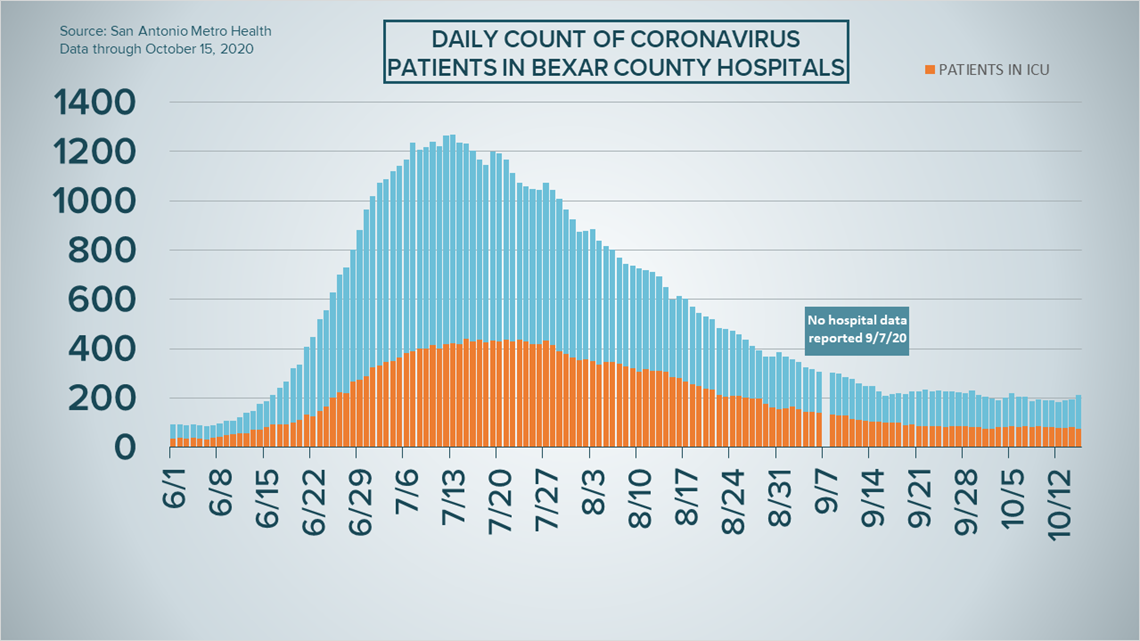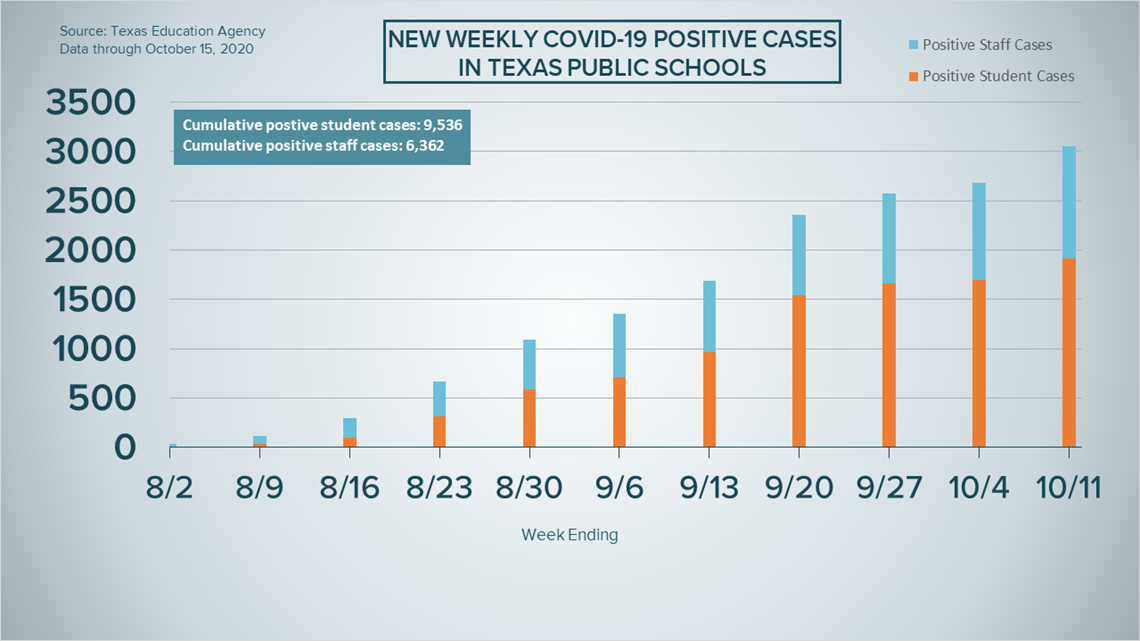SAN ANTONIO — We're tracking the latest numbers from the coronavirus pandemic in San Antonio and across Texas. Here are the latest numbers reported by Bexar and surrounding counties:
Bexar County: 224 new cases were reported Thursday, bringing the total number of cases for the county to 60,258. There were also two new deaths reported, which means the county's death toll rose to 1,209.
Comal County: The county reported sixteen additional cases and no additional virus-related deaths on Thursday. There have been a total of 3,642 cases of COVID-19 in the county – including 2,822 confirmed cases – while 120 county residents have died. County officials say there are 107 active coronavirus cases, and 3,415 residents are considered recovered.
Hays County: Officials in Hays County on Thursday reported 24 new cases in the county and two additional virus-related deaths. As of Thursday, there are a total of 6,134 lab-confirmed cases in the county (781 of which are active) while the death toll rose to 59. 5,294 residents have recovered from the virus.
How Bexar County is trending
We've tracked how many coronavirus cases have been confirmed in Bexar County from the time officials began reporting cases in March 2020. The graphic below shows the number of cases since June and charts those daily case numbers along a 7-day moving average to provide a more accurate picture of the overall coronavirus case curve in our area and the direction we're trending amid the pandemic.
On Thursday, Mayor Ron Nirenberg reported an additional 224 coronavirus cases in Bexar County, bringing the total to 60,258. The county's moving average for the number of newly-reported cases over the last seven days rose to 134.
Nirenberg also reported two new virus-related deaths; in all, 1,209 county residents have died from COVID-19 complications.


Area hospitalizations from the virus rose again Thursday. After 193 residents were reported in the hospital Wednesday, 203 hospitalizations were reported the following day. The number of patients using ventilators (33) , and the number of those in ICU (76) dropped.


Coronavirus in Texas
The number of Texans who have tested positive for the coronavirus since the pandemic began grew by 4,726 cases Thursday, according to the Texas Department of State Health Services.
4,615 of those are new diagnoses over the last 24 hours, while the other 111 cases stem from a number of backlogs in Dallas, Galveston, Harris, Nacogdoches, and Trinity counties. More details can be found at the top of this page.
In total, 809,808 coronavirus cases have been confirmed in Texas.


State health authorities, meanwhile, reported 95 additional virus-related deaths on Wednesday. At least 16,812 Texans have passed away from COVID-19 complications.
Meanwhile, COVID-19-related hospitalizations continued to rise throughout the state. 132 Texans were receiving treatment for COVID-19 compared to Tuesday, bringing the total to 4,263 and continuing a bad trend for the state's hospitals. In the past nine days, 869 more Texans were admitted to hospitals for the virus than were discharged.
The state estimates that 716,015 Texans have recovered, while 78,720 Texans remain ill with COVID-19.
Meanwhile, the Texas Education Agency updated its online coronavirus database to show that there have been 15,898 cumulative cases among staff and students across the state as of Oct. 15. More information can be found here.


The TEA releases new data on school cases every Thursday.
Latest Coronavirus Headlines
- 'We need your help!' | Fiesta San Antonio says the party is happening, if we 'do our part'
- 'It was a difficult decision': Karnes City ISD Superintendent explains temporarily closing schools
- Eight Texas school systems will get rapid coronavirus tests with new pilot program
- Study finds low risk of COVID-19 exposure through air on flights when masked
- As El Paso sees another record-high for coronavirus infections, leaders step up restrictions
- This is the one county in Texas that hasn't had a COVID-19 case confirmed
- Dr. Fauci criticizes concept of 'herd immunity' to combat COVID-19
- US jobless claims reach 898,000 as layoffs remain high
Coronavirus symptoms
The symptoms of coronavirus can be similar to the flu or a bad cold. Symptoms include fever or chills, cough, shortness of breath or difficulty breathing, fatigue, muscle or body aches, headache, new loss of taste or smell sore throat, congestion or runny nose, nausea or vomiting and diarrhea, according to the Centers for Disease Control.
Most healthy people will have mild symptoms. A study of more than 72,000 patients by the Centers for Disease Control in China showed 80 percent of the cases there were mild.
But infections can cause pneumonia, severe acute respiratory syndrome, kidney failure, and even death, according to the World Health Organization. Older people with underlying health conditions are most at risk.
But infections can cause pneumonia, severe acute respiratory syndrome, kidney failure, and even death, according to the World Health Organization. Older people with underlying health conditions are most at risk.
Experts determined there was consistent evidence these conditions increase a person's risk, regardless of age:
- Chronic kidney disease
- COPD (chronic obstructive pulmonary disease)
- Obesity (BMI of 30 or higher)
- Immunocompromised state (weakened immune system) from solid organ transplant
- Serious heart conditions, such as heart failure, coronary artery disease, or cardiomyopathies
- Sickle cell disease
- Type 2 diabetes
The CDC believes symptoms may appear anywhere from two to 14 days after being exposed.
Human coronaviruses are usually spread...
- Between people who are in close contact with one another (within about 6 feet).
- Through respiratory droplets produced when an infected person coughs, sneezes or talks. These droplets can land in the mouths or noses of people who are nearby or possibly be inhaled into the lungs.
- Some recent studies have suggested that COVID-19 may be spread by people who are not showing symptoms.
Help stop the spread of coronavirus
- Stay home when you are sick.
- Eat and sleep separately from your family members
- Use different utensils and dishes
- Cover your cough or sneeze with your arm, not your hand.
- If you use a tissue, throw it in the trash.

